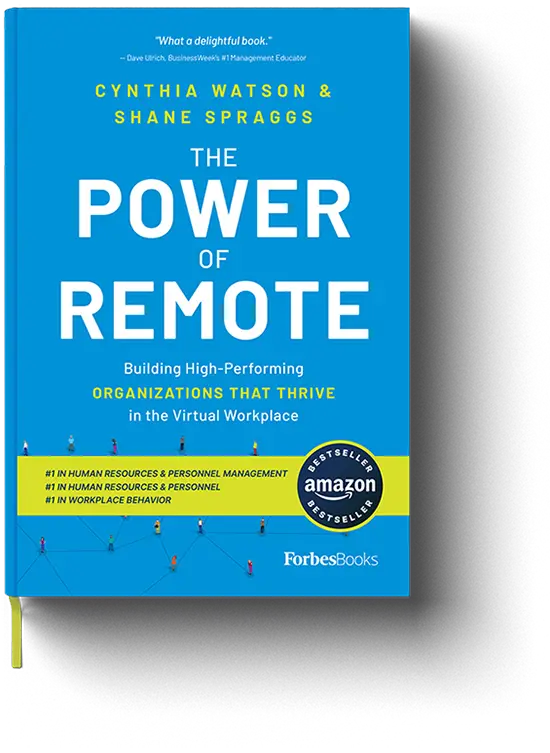Revisit the original article of our insightful five-part series, ‘Why Hauling Everyone Back To The Office Doesn’t Make Them More Productive.’
Without a clear, rigorous, and effective onboarding program, new hires can end up lost, without a map or compass. Failed onboarding often leads to attrition, cutting productivity and the bottom line. The average cost of a new hire is nearly $4,500 and 24 days of work. Yet nearly 9 of 10 employees (88 percent) say their employer did a poor job with onboarding, according to Gallup. That may explain why businesses have a more than one in four chance of losing new hires fairly quickly — 28 percent leave within six months.
Do your firm a favor and place it among the upper echelon that provides an empowering onboarding process. Strong onboarding and training allow you to create engaged employees who stick around. Organizations with a robust onboarding process improve new hire retention by 82 percent and productivity by more than 70 percent.
We embrace a 90-day onboarding plan that ensures new employees master remote skills and technical functions, embrace their job and place within the team, and meet established expectations. Setting specific expectations helps new hires come to the table knowing how best to fit in, how work is measured, and how they can progress in their role. New hires who have been given a clear career development plan within their new organization are significantly more likely to express satisfaction with their onboarding process.
Once the hiring is official, the first thing new remote employees should see, even before their company-purchased laptop lands on their doorstep, is a “Welcome from the CEO” message that lays out the company’s purpose and core values. Why does the company exist? What’s our story and what do we stand for? What is our mission and vision?
Video, promotional brochure, slide show — the medium and method of delivery are largely immaterial, though it should be attention-grabbing and visually appealing. What matters most is that it captures and conveys the essence of the firm. Everything the new hire will learn as part of her job — from policies and procedures to meeting protocols and core values — will be anchored in this first impression of company culture.
Thus, this “welcome” message must arrive quickly, underscoring the company’s enthusiasm for the new hire and strongly communicating its vision, mission, and core values.
Next, a Day One briefing could reiterate the firm’s mission and values before a manager or immediate supervisor outline the new hire’s position and broader role. This way, the new hire is able to see how her work fits into the bigger picture.
Also, on Day One, the new hire should be introduced to co-workers, particularly her team. These introductions are crucial and should be done as soon as possible. In those initial hellos, your firm has an opportunity to imprint itself positively on the new hire, establishing an understanding of company culture, forging strong connections, and laying the groundwork for long and fruitful professional relationships.
This is particularly true for remote employees, who primarily work in solitude, far from any colleague or manager who might have made them feel more welcome in an office setting. One of the leading indicators of job longevity has always been strong social ties, but remote work can leave employees feeling marginalized, expendable, and isolated.
Remote workers tend to work more and harder than in-office workers. The result is a burnout epidemic, with more than 7 out of 10 remote workers experiencing some level of burnout, according to a late 2020 study. A great way to help new remote hires quickly connect with their new colleagues and employer is to pair them with an onboarding buddy.
Befitting the name, buddies should be peers rather than authority figures who might one day evaluate their charges. New kids on the block need someone with whom they feel comfortable enough to confide about their role or problematic boss. Choosing the wrong buddy, one lacking in enthusiasm, understanding, or patience, for instance, could lead to poor performance or even attrition — and repeating the process all over again.
Buddies should know how to explain company culture and help new hires navigate their new workplace. Buddies should make a point of giving the new hire an office tour, whether virtual or in-person. Also, a buddy is a perfect guide for the company’s network, primary communications platforms, and tech tools — when and how to use each and for what purposes.
Buddies should be deeply familiar with core values and guiding principles, as they’ll serve as the new hire’s company culture mentor. It’s crucial that the buddy has enough time to regularly work with the new hire throughout the 90-day onboarding period, including sitting in on periodic review meetings.
On that point, scheduling regular reviews are important to give the new hire opportunities to demonstrate knowledge and abilities. We also like to use a series of quizzes to boost comprehension and find areas that need improvement. These regular progress reviews are crucial. Daily check-ins should be part of your onboarding process in the first couple of weeks to ensure the new hire is comfortable and facing no significant roadblocks.

With increased demand for hybrid and fully remote work styles, most firms understand that some form of distance work is here to stay – and have put some remote protocols in place. But are they the right ones?
It’s time to take advantage of the many opportunities remote work presents. Stop saying “we’re not there yet,” and start saying “we’ve arrived!”
This book will show you how.